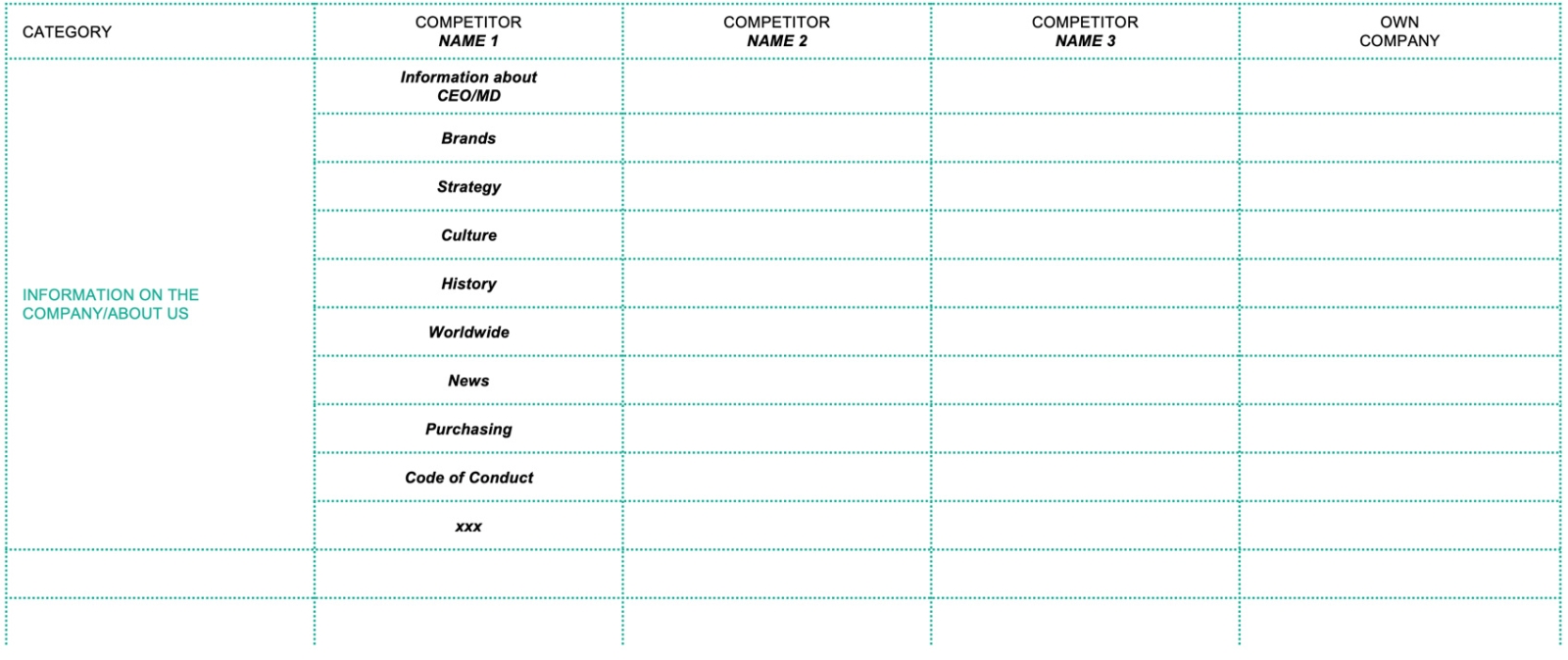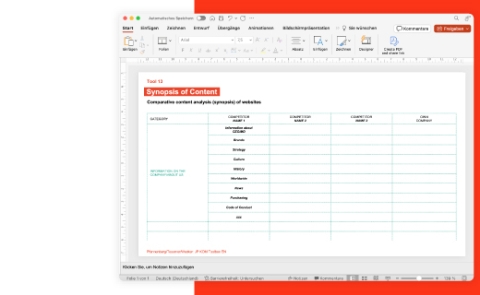Synopsis of Content

Guiding question
What information does your measure need to provide to be competitive/meet stakeholder expectations?
Objectives
- Compare the depth of information and structure of best practices with your own offering
- Recognize deficits of the own information offer
- Identify minimum content standards of the industry (must-haves) or of a type of company
- Uncover redundant content of your own company
Implementation
The synopsis is performed in the following steps:
- The most important competitors and best practice companies from other industries – national and international – are selected.
- The headings and subheadings, e.g., of the web pages, are compared in a table. Identical headings/topic areas are compared synoptically in one line.
- It becomes immediately clear which content is played by most of the competitors via this channel and which is only presented by individual companies.
Theory: Synopsis
The synopsis (ancient Greek συνοπτικός synoptikós 'Seeing the whole together', σύνοψις sýnopsis 'Synopsis') serves as a comparative overview and comparison of similar data and texts from two or more documents. The horizontal assignment of the same or similar content in columns makes it immediately clear which topics are represented in the same way in the documents and which are represented differently. This facilitates comparative analysis.
The origin of synoptics lies in the critical biblical research of the 18th and 19th centuries. Here – first in the Synopsis of the Gospels by Johann Jakob Griesbach in 1776 – the first three Gospels of the New Testament (according to Matthew, according to Mark and according to Luke) were contrasted. It became immediately clear how much common material, but also what "gaps" the Gospels contain. This is one of the starting points of the historical-critical exegesis of the Bible, e.g., by David Friedrich Strauß (1835/36), with the aim of determining the “content of truth" in the biblical tradition.
